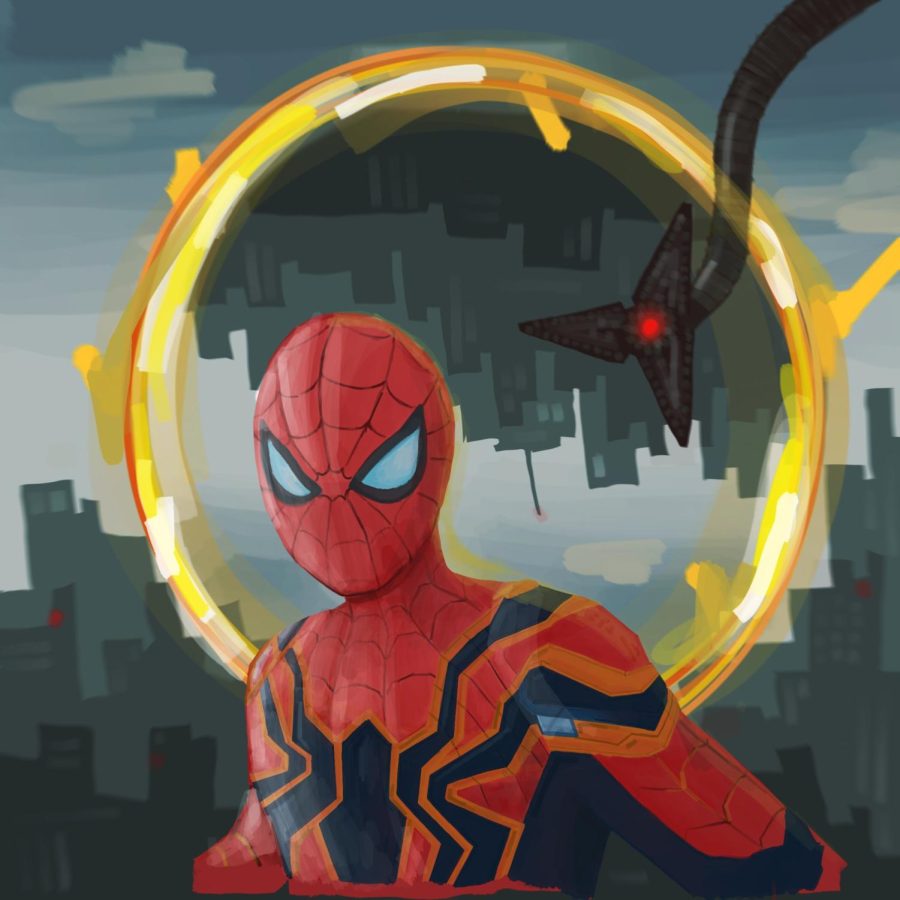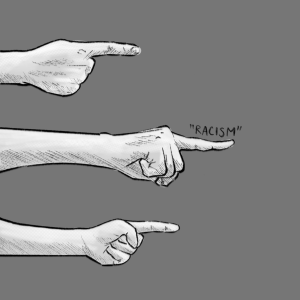Peter “Parkours” Into Theaters with Spider-Man: No Way Home
February 6, 2022
Rating: 4/5 Falcons
Co-produced by Columbia Pictures and Marvel Studios and directed by John Watts, Spider-Man: No Way Home has captivated the attention of millions. In a continuation from Spider-Man: Far From Home, Spider-Man’s identity is revealed to the public as Peter Parker (Tom Holland) by the villain Mysterio (Jake Gyllenhaal), presenting many challenges to Parker and all who know him. Frustrated by the unfair treatment and negative reaction from the city of New York, Parker confides in ally Doctor Strange (Benedict Cumberbatch). Strange conjures a risky spell to remedy Parker’s situation, the effects of which are unforeseen.
Spider-Man: No Way Home gives viewers a deeper look into the Marvel mystery of the multiverse, introduced in 2013 with Thor: The Dark World. The film seamlessly integrates elements from the past two Spider-Man adaptations—the Spider-Man trilogy and The Amazing Spider-Man duology—in a natural manner. To an extent, I agree that these nostalgic references to past movies were made simply to please viewers, but Marvel also found ways to blend old elements smoothly into a fresh plot.
Even so, viewers saw a new side of Parker’s emotional journey, as he continued to deal with the grief and burden of his exposed identity.
Like the past two movies, the soundtrack was composed by Michael Giacchino, the renowned melodist known for the iconic scores of blockbusters such as Up and The Incredibles, among other Disney/Pixar and Marvel movies. The classic combat was nothing new for Marvel, but the hair-raising instrumentals were the perfect accompaniment to action-packed fight scenes and glowing visual effects. The use of computer-generated imagery was slightly overpowering at times, shifting the attention away from the actors. Even so, viewers saw a new side of Parker’s emotional journey, as he continued to deal with the grief and burden of his exposed identity. The evolution of Peter Parker from Homecoming to No Way Home was reflected in Holland’s compelling performance and his maturation as an actor.
Much of what contributed to a fantastic watching experience was the hype leading up to the event. Weeks before, fans were prepared for the release: ordering Spider-Man–themed costumes, watching past Marvel Cinematic Universe and Spider-Man movies, and deleting social media to avoid spoilers. Excusing the occasional failed attempts of comedic relief, the roaring fan reactions in the theater was an integral part of what made viewing such a high-energy and lively experience.
The film was deservingly a smash hit at the box office.
The film was deservingly a smash hit at the box office. As of January 11th, No Way Home was the eighth highest-grossing movie, making nearly $1.5 billion. It has earned 93% on Rotten Tomatoes as well as praise on other established platforms. These high ratings are justified, but I am skeptical of how much the audience’s enthusiastic support contributed to the enjoyment of the event. How would the film fare as a solitary watch at home? The absence of a dynamic audience could take away from the film itself. Despite recent COVID-19 surges, opening night of December 17th hosted 1.1 million audience members—including myself—raking in $260 million to pass Infinity War and earning the second-highest domestic opening at the box office.
The themes of vindication, responsibility, and synergy make for a powerful and thought-provoking picture. By and large, Spider-Man: No Way Home is well worth the hype, and a must-watch for superhero fans.











